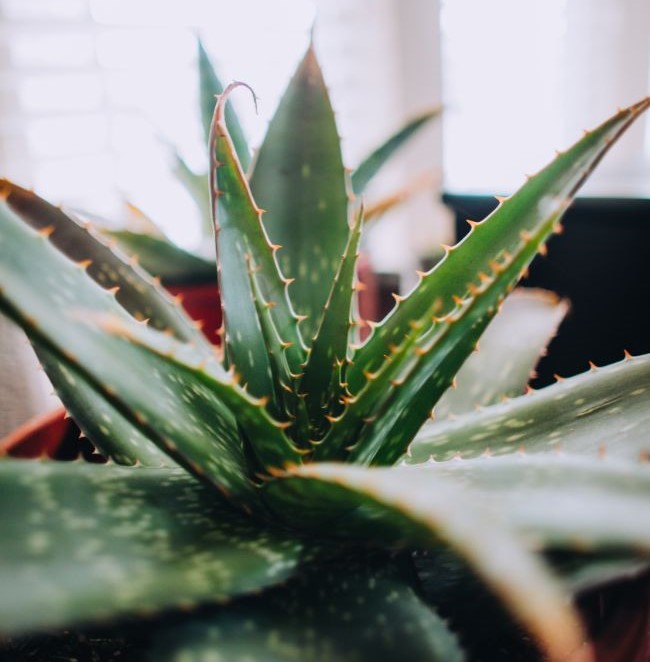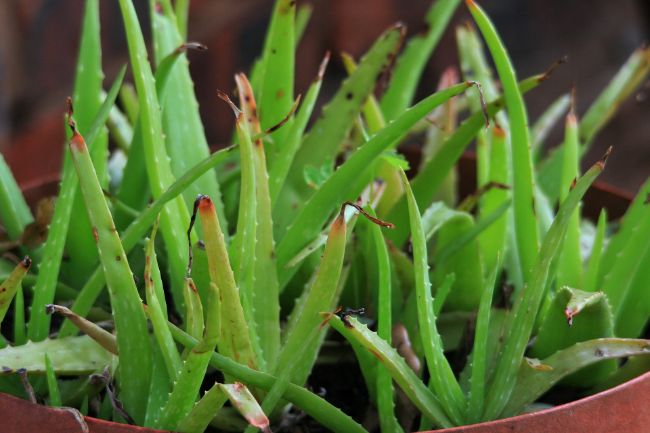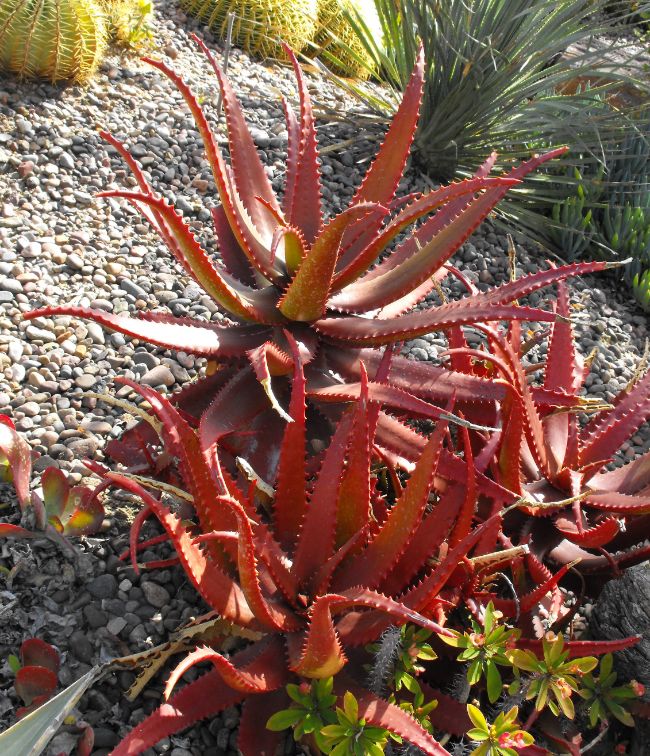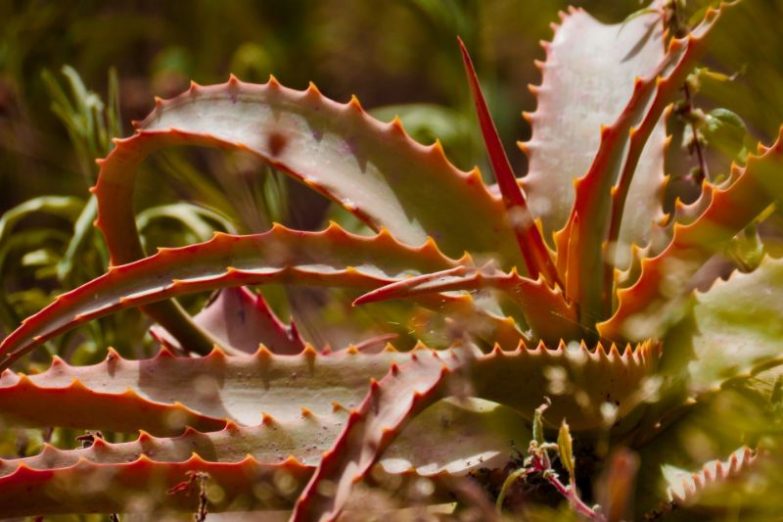Aloes are one of the world’s most popular plants, prized for their unique looks, ease of care, and unique medicinal properties. It’s common for the leaves to develop red coloration, but this isn’t always a problem. Let’s look at why your Aloe Plant is turning red and whether it’s a sign of trouble … and, if so, how to fix it.
Why Is Your Aloe Plant Turning Red? The leaves of many Aloe Plants adapt naturally to intense light by turning red. The foliage can become similarly discolored from the stress of cold temperatures, overwatering, sunburn, fertilizer shock, or even a recent repotting. Correcting the plant’s care usually resolves the issue quickly.
Overview Of Why Aloe Plants Turn Red
The hundreds of species of the Aloe genus come in many forms and sizes. Also called the Wonder Plant due to the medicinal and cosmetic properties ascribed to the gel-like sap of some varieties – notably the Aloe Vera – it is a succulent known for thriving in sunny, dry conditions.
Many Aloes redden naturally as an adaptation to strong light. Though some owners mistake this healthy process for sunburn, such reddening is really more of a suntan that protects the leaves from intense sunlight.
On the other hand, an Aloe’s leaves can be “talkative” when it’s not happy. A change in coloration doesn’t necessarily signal serious danger to the plant, but it can give you information about its status.
The plant often turns shades of red or brown from stress or a change in their environment. If your plant is a color other than green, it’s important to determine the reason and correct any problem.
Note: You can trim or pull off damaged or dried leaves without bothering the plant.
To help you diagnose the situation, we’ll first look at normal reddening caused in reaction to strong light, and then examine possible issues that need correction. A stressed plant typically regains its healthy color quickly once the problem is resolved.
Healthy Coloration From Sunshine
Aloes generally do best with several hours of direct sun a day. Some smaller varieties do well in shadier spots, but most Aloes like a bright location.
That doesn’t mean they want to bake in glaring, hot sunshine, however. Aloe varieties differ in how much direct sunlight they want, but most appreciate protection from intense midday sun.
As a natural-born sun-worshipper, the plant reacts to strong light by turning a color from red to deep bronze as a shield against excess rays. This pigment is the same protective chemical, anthocyanin, that many trees produce each autumn and which turns their leaves red.
In many cases, an Aloe plant turning red is a welcome sign of a happy specimen. You’ll need to research your own variety to pinpoint its needs, but a tinge of red on a robust plant usually means it’s getting adequate illumination. It’s nothing to worry about.
You can reduce the light if you want an all-green specimen, but too little light is more of a problem than too much. Here’s how to tell the difference:
Too Much Light: Outdoor Aloes often turn red to brown over the summer and green up again each fall without incident – but that’s different than unhealthy color changes caused by sun damage. Harmful sunburn can cause dry brown scars, shrivelled foliage, thin leaves, and burned tips.
Insufficient Light: An Aloe in low-light conditions will, in turn, lose its red tints and become lighter green as it gasps for sunlight. The center will be paler than the rest of the plant. Eventually, an Aloe that’s not getting enough light will grow leggy, splay out, and/or stretch towards its light source.

Acclimation Is Important For Your Aloe Plant
Though Aloes are happy in full sun, they need time to adjust to a change increase of light. Natural outdoor light is much brighter than indoor illumination, and windows filter out the ultraviolet rays an Aloe’s red pigmentation is meant to block.
Don’t take your Aloe from an indoor window and immediately place it in the sun. Put the plant in bright, indirect light when you first move it outside. Gradually expose them to stronger light.
This works the other way, too. Before bringing in a plant that’s used to full sun, allow it a couple of weeks in bright shade to smooth the transition.
Unhealthy Causes Of An Aloe Plant Turning Red
Water Woes
Overwatering is a real danger to an Aloe. The foliage can turn brown and mushy from rot: this is much worse than discoloration caused by sunlight. An Aloe can easily rebound from sun shock, but it’s hard for them to recover from watery rot.
By far the best solution is to avoid the problem. Here are some tips:
- Be judicious in watering. Don’t use a preset schedule; monitor the soil and only water when the pot is three-quarters dry.
- A typical interval between waterings is about two to four weeks during the growing season, depending on the environment.
- Another indication of the right time to water is when the leaves start to wrinkle slightly. Don’t add water if the leaves are tight and plump.
- Reduce watering over the winter: a combination of cold and wet conditions is very dangerous for Aloes!
- It’s not easy to underwater an Aloe, but the plant is more likely to turn red or brown in harsh light if it lacks moisture. If this happens, water thoroughly – but don’t go overboard to make up for it. Just resume normal watering.
Heavy Soil
Aloe plants need a light, pH-neutral or slightly alkaline soil that drains exceptionally well. An Aloe’s roots quickly uptake water into its fleshy leaves: the porous soil of their native habitat drains quickly. A heavy, moisture-retaining mix makes it difficult to keep the roots safely dry.
Waterlogged soil is deadly for Aloes!
Retail cactus mix is an ideal base. Add in regular potting soil, humus, or organic materials to give the soil absorptive capacity and some nutrition … but don’t sacrifice its fast-draining quality.
A 50-50 mix of cactus soil and a richer potting medium is about right. If the mix drains too slowly or retains excess moisture, add in coarse sand, perlite, or other aerating amendments.
Read my article about choosing and making soil for houseplants to learn more.

Too Much Fertilizer
Aloes need only light, infrequent feeding. Because their root system is designed to quickly uptake moisture, Aloes can gorge and overdose on a heavy application of fertilizer. An Aloe plant turning red can be due to shock from overfeeding, causing discoloration of their leaves and crisping of the tips.
Organic fertilizers are gentler than synthetic blends, but even organics should be lightly applied. Liquid is safer and easier to use than a dry, granular form. A blend high in phosphorus is recommended.
Dilute the fertilizer by one-half to one-quarter. One recommendation is to feed at the opening of the growing season and every six weeks thereafter until late summer, and then don’t fertilize until the following spring.
Pro Tip: To protect your Aloe’s sensitive roots from fertilizer shock, thoroughly soak (and drain) the soil about 12 hours before feeding. The roots will retain a thin layer of moisture that partially shields them from direct, rapid intake.
Excess Salts
Another problem with overfertilization is that it can load the soil with chemical salts. The buildup can burn the sensitive roots, which may lead to discoloration and browning on leaf edges and tips.
Flush the soil each time you water by running a stream freely through the soil. This helps to rinse out salts and other toxins. Let the soil drain thoroughly.
Repotting Reaction
Repotting is a major event for a plant. Your Aloe plant turning red can be a reaction to the stress of repotting, but should recover as the plant settles into its new home.
Here are some tips to make the move easier:
- Only go up one pot size, or about an inch in diameter. Extra soil space can become soggy and stagnant without roots to absorb moisture.
- An unglazed clay pot helps the soil dry out more quickly.
- Use the same fast-draining soil mix the plant is planted in, or one of similar composition.
- Don’t put your newly potted Aloe in bright sunlight immediately, even if it was in full sun before. Give it a week or so of protection from intense rays while it regroups.
- Hold off on fertilizing for a month or two. In fact, you might wait longer, since the plant can probably get the modest nutrition it needs from the newly replenished soil.
Is Your Aloe Plant Turning Red Due to Temperature Stress?
Cold temperatures can result in an Aloe plant turning red or purplish. The anthocyanins that cause the darkening are thought to protect the plant from temperatures extremes. You might see a color change even if your plant gets a brief chill.
Most Aloes prefer temperatures between 55ºF (13ºC) and 80°F (27°C). Some varieties are more cold-tolerant than others, but if conditions drop below 50ºF (10ºC) you can expect some color reaction. If your plant starts turning red in cool autumn weather, it’s a sign the plant should be brought inside.
If you’re seeing red tinting on leaves close to a window during the cool season, the spot might be too cold for them. Even in a warm room, temperatures can be surprisingly cold next to a frosty window. Drafts – hot or cold – can also trigger a color change. Air circulation helps the evaporation of excess moisture, but a steady blowing current is unhealthy.
Aloe Plants That Are Naturally Red

There are a number of Aloe species that have naturally red leaves, such as the wonderful Aloe cameronii. Native to Zimbabwe and Malawi, this striking Aloe species has naturally red foliage, although the color does vary depending on the season and lighting.
In winter, the leaves will be largely green, with red edges and tips, but in summer, in good lighting, almost the entire plant turns a wonderful shade of red. Aloe cameronii actually prefers more intense sunlight than other Aloe species, so give this one plenty of direct sunlight to get the best display of red foliage.

